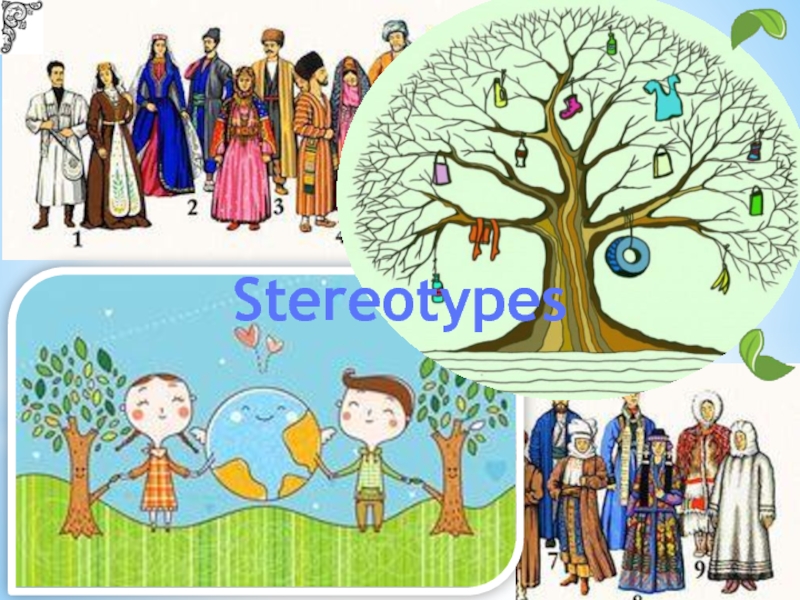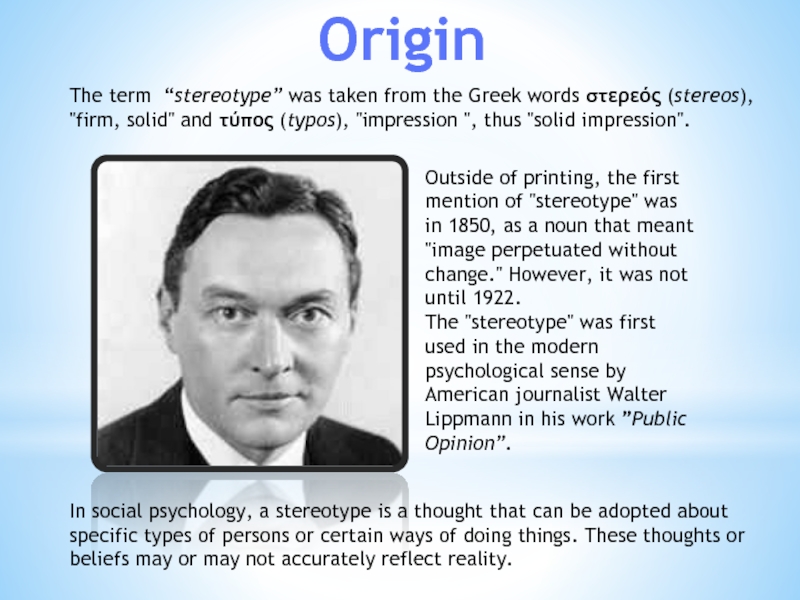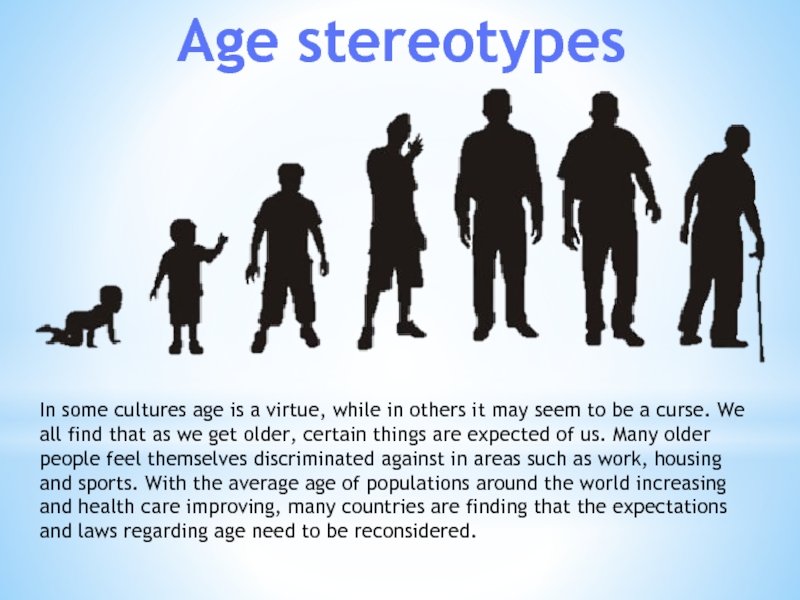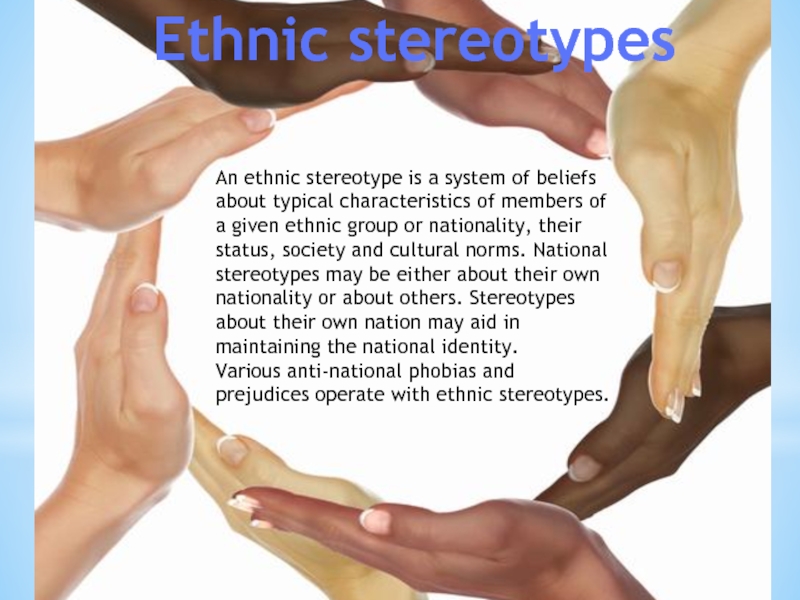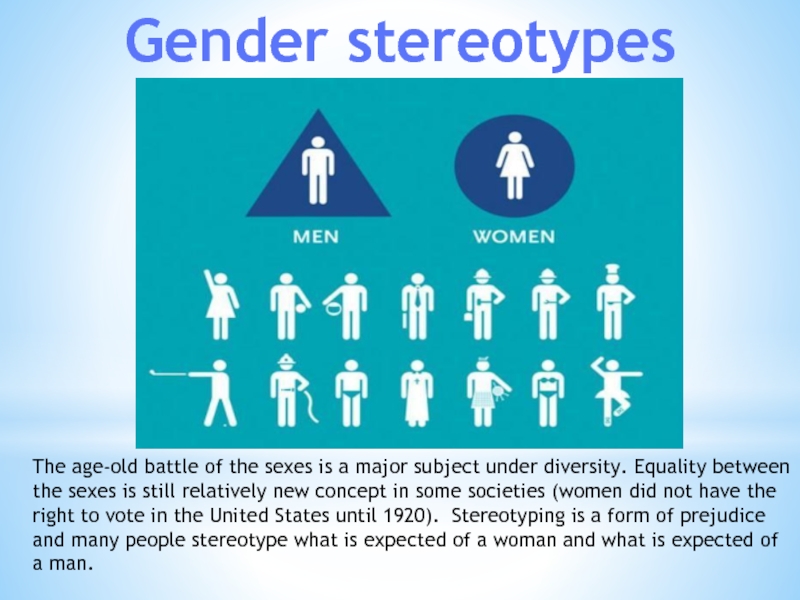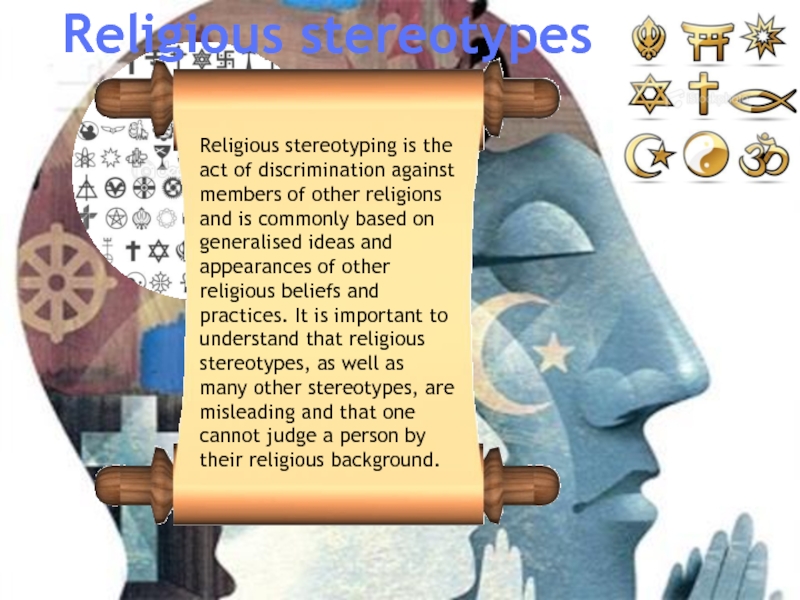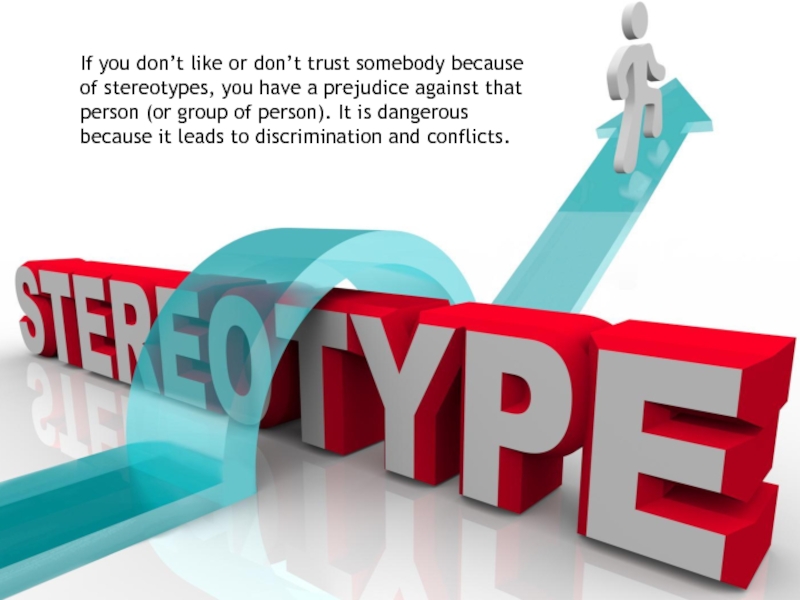- Главная
- Разное
- Дизайн
- Бизнес и предпринимательство
- Аналитика
- Образование
- Развлечения
- Красота и здоровье
- Финансы
- Государство
- Путешествия
- Спорт
- Недвижимость
- Армия
- Графика
- Культурология
- Еда и кулинария
- Лингвистика
- Английский язык
- Астрономия
- Алгебра
- Биология
- География
- Детские презентации
- Информатика
- История
- Литература
- Маркетинг
- Математика
- Медицина
- Менеджмент
- Музыка
- МХК
- Немецкий язык
- ОБЖ
- Обществознание
- Окружающий мир
- Педагогика
- Русский язык
- Технология
- Физика
- Философия
- Химия
- Шаблоны, картинки для презентаций
- Экология
- Экономика
- Юриспруденция
Stereotypes презентация
Содержание
- 1. Stereotypes
- 2. Origin The term “stereotype” was taken from the Greek words
- 3. The term “stereotype” was taken from the Greek words στερεός
- 4. Age stereotypes In some cultures age is
- 5. Ethnic stereotypes An ethnic stereotype is a
- 6. Gender stereotypes The age-old battle of the
- 7. In many countries around the world the
- 8. Religious stereotypes Religious stereotyping is the act
- 9. If you don’t like or don’t trust
Слайд 2Origin
The term “stereotype” was taken from the Greek words στερεός (stereos), "firm, solid" and τύπος
The term comes from the printing trade and was first adopted in 1798 by Firmin Didot to describe a printing plate that duplicated any typography. The duplicate printing plate, or the stereotype, is used for printing instead of the original.
Слайд 3The term “stereotype” was taken from the Greek words στερεός (stereos), "firm, solid" and τύπος
Outside of printing, the first mention of "stereotype" was in 1850, as a noun that meant "image perpetuated without change." However, it was not until 1922.
The "stereotype" was first used in the modern psychological sense by American journalist Walter Lippmann in his work ”Public Opinion”.
In social psychology, a stereotype is a thought that can be adopted about specific types of persons or certain ways of doing things. These thoughts or beliefs may or may not accurately reflect reality.
Origin
Слайд 4Age stereotypes
In some cultures age is a virtue, while in others
Слайд 5Ethnic stereotypes
An ethnic stereotype is a system of beliefs about typical
Various anti-national phobias and prejudices operate with ethnic stereotypes.
